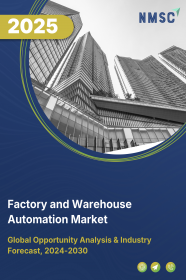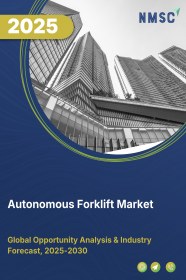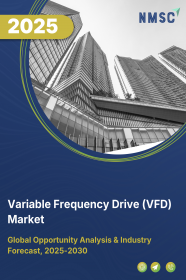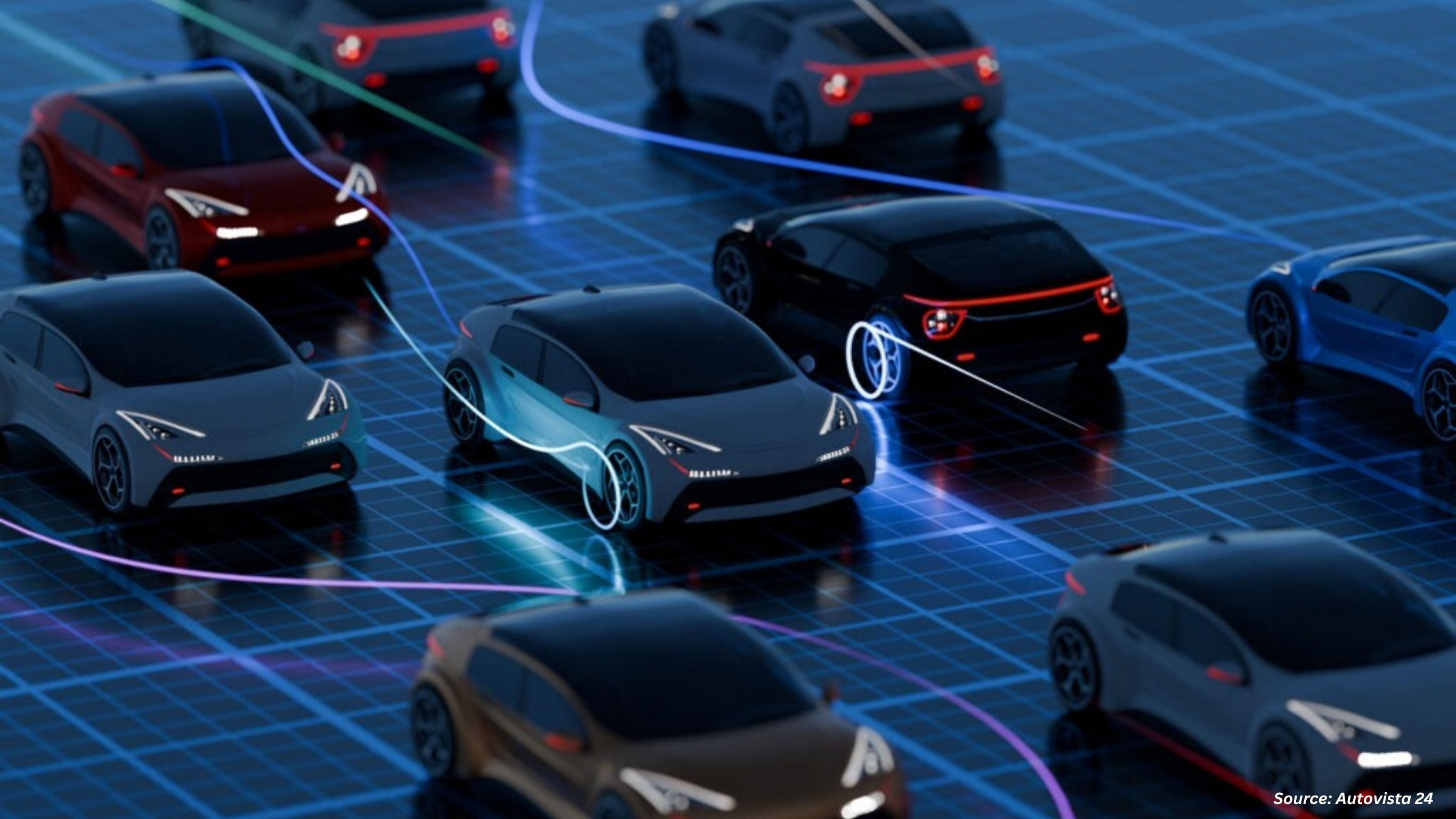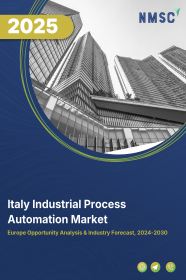
Italy Industrial Process Automation Market by Component {MES (Hardware, Software, Services); DCS (Hardware, Software, Services); PLC (Hardware, Software, Services); SCADA (Hardware, Software, Services); Field Instruments; Industrial Robots; Human Machine Interface; Industrial PCs; Process Analyzers & Drives} and by End User (Oil & Gas, Chemicals & Refining, Energy & Power, Pulp & Paper, Metals & Mining, Pharma, & Others) – Global Opportunity Analysis and Industry Forecast, 2025–2030
Industry: Semiconductor & Electronics | Publish Date: 10-Nov-2025 | No of Pages: 159 | No. of Tables: 122 | No. of Figures: 67 | Format: PDF | Report Code : SE985
Industry Outlook
The Italy Industrial Process Automation Market size was valued at USD 3.60 billion in 2024 and is projected to grow to USD 3.91 billion by 2025. Additionally, the industry is expected to continue its growth trajectory, reaching USD 5.27 billion by 2030, at a CAGR of 6.57% from 2025 to 2030.
The growth of Italy's chemical industry and the increasing adoption of robotics are major drivers of the industrial process automation market, as businesses seek to improve efficiency, precision, and safety in manufacturing. Automation technologies help optimize complex workflows, reduce errors, and boost productivity, making them essential for meeting growing market demands. However, regulatory and compliance challenges slow the pace of adoption, as companies face delays and additional costs when aligning with industry standards. The integration of AI and ML offers significant opportunities to enhance predictive maintenance, optimize production processes, and improve decision-making, positioning Italy as a leader in advanced automation technologies and driving long-term market growth.
Growth of the Chemical Industry Accelerates the Italy Industrial Process Automation Market Demand
The expansion of Italy’s chemical industry is significantly driving the demand for industrial process automation. As the need for improved efficiency, precision, and safety in manufacturing processes becomes more critical, automation technologies are increasingly being adopted. The global rise in demand for chemicals necessitates the use of advanced automation solutions to optimize complex workflows, reduce human error, and improve overall operational performance. With robust sales in the chemical sector, automation technologies are seen as essential tools to streamline production, boost productivity, and meet increasing market demands. This growing reliance on automation is fostering long-term market growth, as companies in the chemical industry look for innovative ways to stay competitive and efficient.
Robotics Adoption Drives the Italy Industrial Process Automation Market Expansion
The integration of robotics in Italy’s manufacturing sector is another key driver of industrial process automation. Robotics offer significant advantages in precision, adaptability, and operational efficiency, enabling faster production workflows and minimizing human errors. In 2023, Italy’s robot density reached 228 units per 10,000 employees, according to the 2024 report by the International Federation of Robotics (IFR). This increasing robot density highlights the growing adoption of automation technologies across various sectors. Robotics is playing a pivotal role in driving productivity, reducing costs, and accelerating the transition toward smarter, more flexible manufacturing processes in Italy.
Regulatory and Compliance Challenges Restrict Market Growth
Despite the strong drivers, regulatory and compliance challenges continue to limit the growth of the industrial process automation market in Italy. The stringent industry standards and complex regulations require significant modifications to automation systems, which delay the implementation of new technologies. Businesses must navigate these regulatory frameworks to ensure compliance, a process that involves additional costs, time, and resources. These hurdles slow the broader adoption of industrial process automation solutions, limiting the speed at which industries fully capitalize on the benefits of automation technologies.
AI and ML Integration Unlocks Future Growth in Industrial Process Automation
The integration of artificial intelligence (AI) and machine learning (ML) presents a significant opportunity for the market. AI and ML technologies enable predictive maintenance, optimize production processes, and improve real-time decision-making, with minimal human involvement. These technologies are crucial for enhancing efficiency, improving product quality, and reducing operational downtime. As industries continue to adopt AI and ML solutions, Italy’s automation capabilities be further enhanced, positioning the country as a leader in smart manufacturing and driving long-term market growth.
Competitive Landscape
The promising players operating in the Italy industrial process automation industry include Siemens AG, ABB Ltd., Schneider Electric SE, Rockwell Automation Inc., Honeywell International Inc., Emerson Electric Co., FANUC Italia S.r.l., Yokogawa Electric Corporation, KUKA AG, Mitsubishi Electric Corporation, Omron Corporation, Bosch Rexroth S.r.l., Yaskawa Italia S.r.l., Danfoss S.p.A., and Festo S.r.l., and others.
Italy Industrial Process Automation Market Key Segments
By Component
-
Manufacturing Execution Systems
-
Hardware
-
Software
-
Services
-
-
Distributed Control Systems
-
Hardware
-
Software
-
Services
-
-
Programmable Logic Control
-
Hardware
-
Software
-
Services
-
-
Supervisory Control and Data Acquisition (SCADA)
-
Hardware
-
Software
-
Services
-
-
Field Instruments
-
Industrial Robots
-
Human Machine Interface
-
Industrial PCS
-
Process Analyzers & Drives
By End-User
-
Oil & Gas
-
Chemical & Refining
-
Energy & Power
-
Pulp & Paper
-
Metals & Mining
-
Pharma
-
Cement & Glass
-
Others
Key Players
-
Siemens AG
-
ABB Ltd.
-
Schneider Electric SE
-
Emerson Electric Co.
-
FANUC Italia S.r.l.
-
Yokogawa Electric Corporation
-
KUKA AG
-
Mitsubishi Electric Corporation
-
Omron Corporation
-
Bosch Rexroth S.r.l.
-
Yaskawa Italia S.r.l.
-
Danfoss S.p.A.
-
Festo S.r.l.
Report Scope and Segmentation
|
Parameters |
Details |
|
Market Size Value in 2025 |
USD 3.91 Billion |
|
Revenue Forecast in 2030 |
USD 5.27 Billion |
|
Value Growth Rate |
CAGR of 6.57% from 2025 to 2030 |
|
Analysis Period |
2024–2030 |
|
Base Year Considered |
2024 |
|
Forecast Period |
2025–2030 |
|
Market Size Estimation |
Billion (USD) |
|
Growth Factors |
|
|
Companies Profiled |
15 |
|
Market Share |
Available for 10 companies |
|
Customization Scope |
Free customization (equivalent to up to 80 working hours of analysts) after purchase. Addition or alteration to country, regional, and segment scope. |
|
Pricing and Purchase Options |
Avail customized purchase options to meet your exact research needs. |

















 Speak to Our Analyst
Speak to Our Analyst



